Photoanxiety
A researcher and a participant will act in a completely different way when a camera is introduced to the field. This was obvious in my ethnographic fieldwork with refugees in Bihać, at the Balkan route created a new emotion – photoanxiety.
The first reason for the photographers’ uneasiness lies in European law, which illegalizes the existence of refugees on European soil. The European Union created an inhuman system through “the rule of law.” Namely, the Dublin Regulation enables countries to hold the country through which a particular migrant first entered the European Union responsible for the migrant in question (EU-lex, 2013). European countries can return migrants to other countries, if there are fingerprints or other proof of a migrant’s existence in another EU country or a safe third country. It often happens that the Dublin Regulation is abused, such as instances where migrants are returned to a safe third country during the asylum procedure (for more information, cf. Montanič, 2014, p. 23-30). Authorities usually use fingerprints as proof during these procedures, however, photographs can also act as proof, although less commonly. Thus, public dissemination of photographs showing the faces of people on the move is discouraged, as it can be potentially harmful. As a result, ethnographic photography on the field in Bihać was different: instead of faces, I wanted to photograph something that I could immediately publish, without potentially causing anyone any harm.
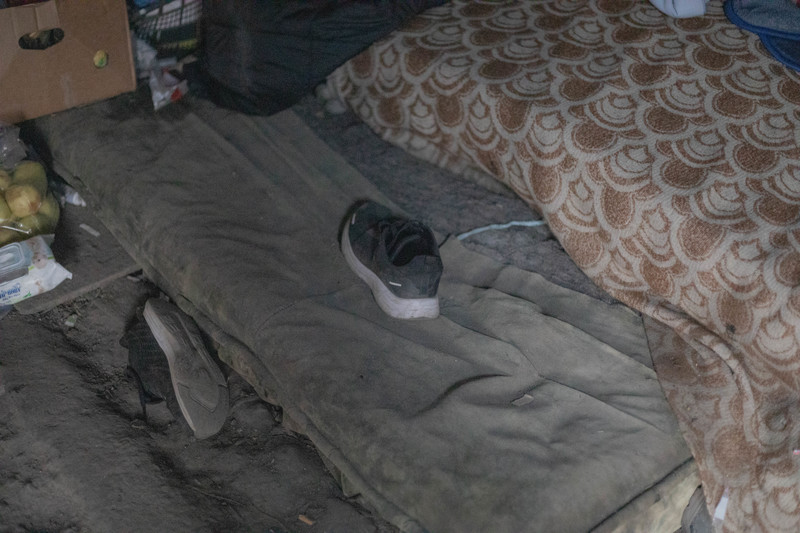 |
 |
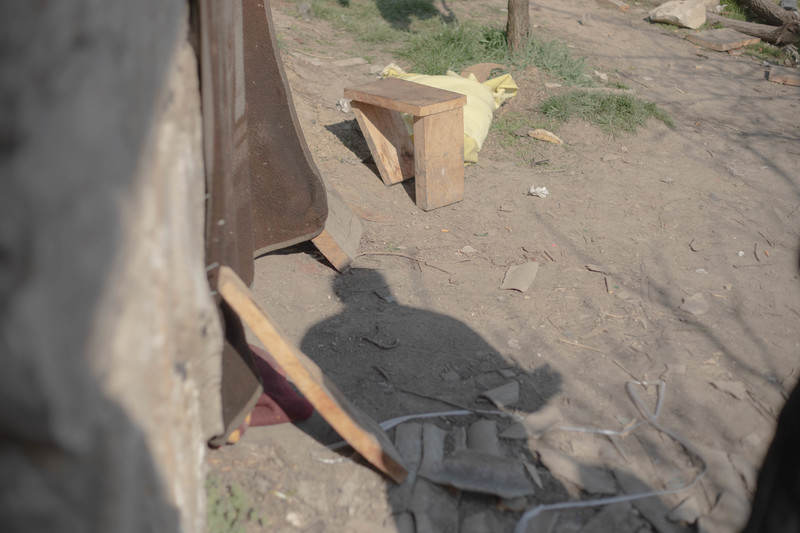 |
Living environment, food, and shadows. Bihać, March 2022. Photo: Dagmar Nared
In this context, the rules of photography are completely bent. Ethnographic photography is seen as a pragmatic and abstract result of what was seen (Collier and Collier 1986). However, due to the context, we cannot photograph the abstract nor the pragmatic. We end up trying to photograph anything that is not a face – shadows, shoes, living spaces. This is contrary to the rules of photography, where we try to portrait people by focusing on their eyes. This is not possible in our given situation.
The reworked rules of photography and the uneasiness on the field further heighten the invisibility experienced by people on the move. In his essay Icons of Becoming (2014), Christian Vium argues that the path of a migrant is one of becoming nobody. A person becomes a non-person, they are stripped of their own subjectivity by the European authorities. They become Agamben’s notion of homo sacer, where the person’s existence is banned by law and may even be killed without any legal consequences (Agamben 1998). People on the move become homo sacer in this context – many of their deaths go unreported, police brutality is tolerated, while helping migrants is criminalized. The migrants’ specific position was also easily noticeable in Bihać. The policemen never even glanced at me when I was photographing a protest in the centre of Bihać, while on the very same day the security guards in Camp Borići, a refugee camp in Bihać, observed me the entire time I was in the vicinity. This type of photography, focusing on homo sacer, and its perpetuated invisibility, further creates and enhances the emotion of photoanxiety.
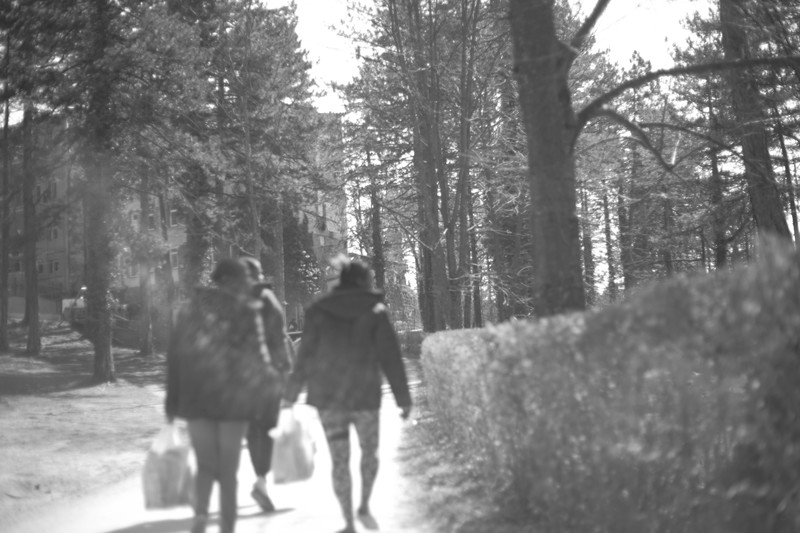
Refugees in front of refugee camp Borići. Bihać, March 2022. Photo: Dagmar Nared
The emotion of photoanxiety can also decrease in two contexts. First, it is influenced by the degree of trust established with the people on the move. This was obvious in a non-governmental organization (NGO) that works with people on the move, just outside of town and has already created a safe environment for them. At first, I wanted to photograph some people, but they were clearly uncomfortable, even when I explained that I would not photograph their faces. Photoanxiety was present both on mine and their side. But it almost completely disappeared when we started to work together around the NGO’s house. I still felt a degree of photoanxiety, even when two Afgani friends wanted me to take pictures of them (“we don’t allow you to take photographs of our asses!”). Moreover, I was aware of my responsibility of not abusing their trust, as emphasized by many ethnographic ethical guidelines (Cox et al. 2014: 12). I was happy I gained their trust and it made my work easier, however, I could not escape the feeling that my camera is a dangerous tool that could be used against them.
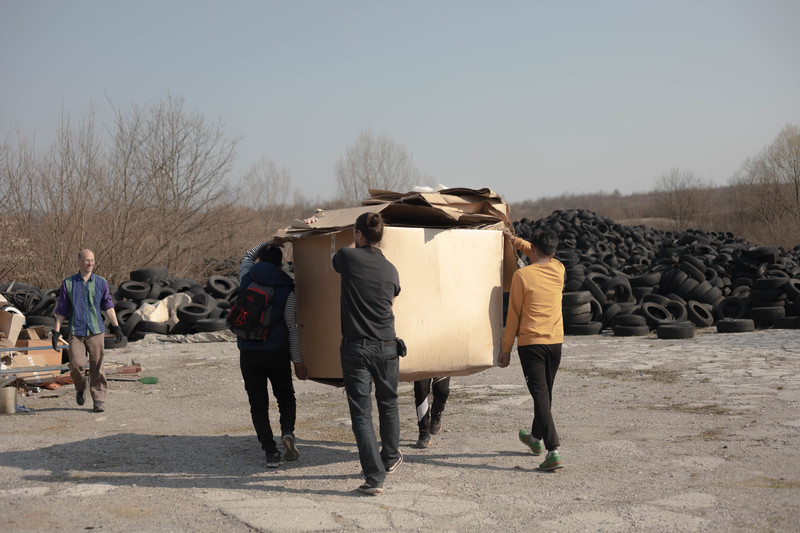 |
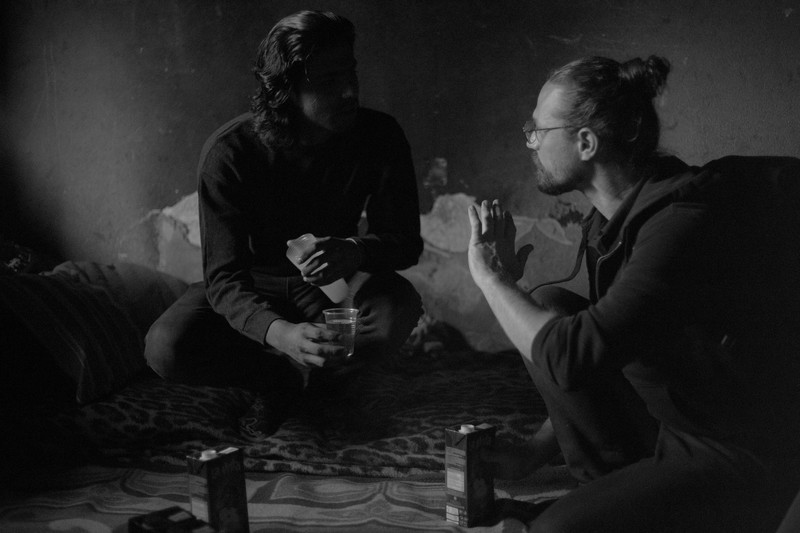 |
Building and Built Trust. Photo: Dagmar Nered
The second context in which photoanxiety may be diminished is the process of editing the photos. Migrants are often imperceptible, but the camera may make them visible and noticeable again, Papadopoulos and Tsianos (2008) argue. Vium (2014) extends this argument even further – it is not only about the visibility of the subject, but rather the aestheticization of it. He gives an example of his own process of editing photos of people on the move: bring up the saturation, add grain for a touch of drama. This is how one communicates the migrants’ position in the EU. However, my experiences tell a somewhat different story: the aestheticization of migrant photography is merely another dimension of a relationship between a photographer and people on the move. Photoanxiety does not disappear once I put my camera down. During the editing process, we once again feel the emotion of photoanxiety. We once again see the parallel and obscure differences between ours and their reality. Looking back at my own editing process, at first I created an extremely bright photo, which I do not think is a coincidence. Colour helped in dealing with the crude reality. In other words, aestheticization is a way to face photoanxiety post-festum.
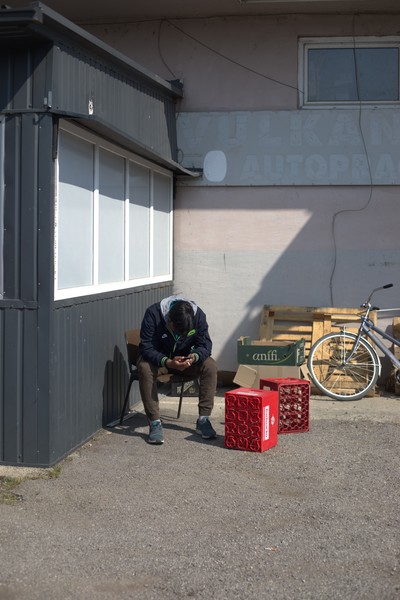 |
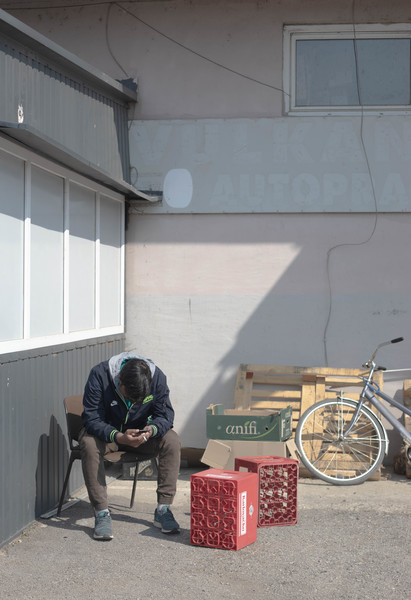 |
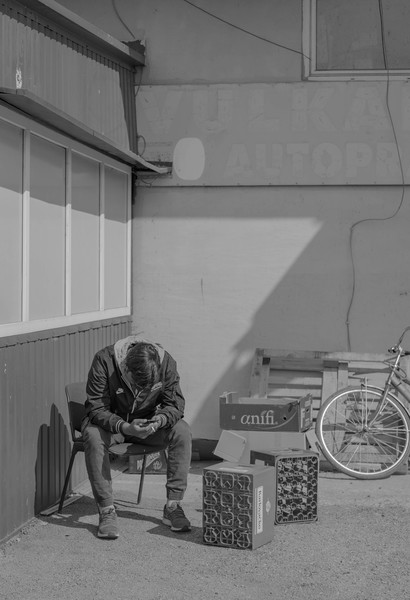 |
Photo editing process. Bihać, March 2022. Photo: Dagmar Nared
Photoanxiety is an emotion created in the particular context of photographing people on the move and their realities. The context, in which we find ourselves in, is specific and cruel due to the European law and the strains it puts on photographing homo sacer. If a camera can capture everything that you otherwise wouldn’t, this situation creates a situation where you try to capture absolutely anything. We chase shadows, instead of eyes.
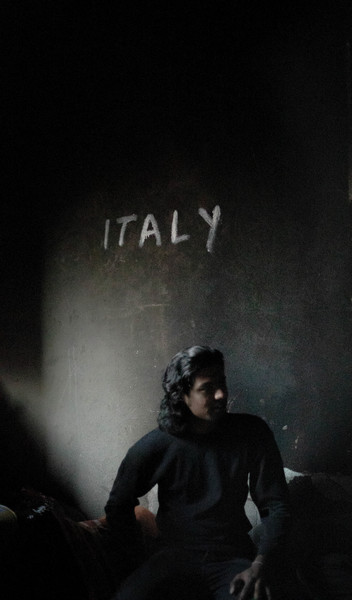
To Italy. Bihać, March 2022. Photo: Dagmar Nared
16/8/2022
Literature
Agamben, Giorgio. 1998. Homo sacer. Sovereign Power and Bare Life. Stanford: Stanford University Press. Translation: Daniel Heller-Roazen
Collier, John and Malcolm Collier. 1986. Visual Anthropology. Photography as a Research Method. Albuquerque: University of New Mexico Press.
Cox, Susan, Sarah Drew, Marilys Guillemin, Catherine Howell, Deborah Warr and Jenny Waycott. 2014. Guidelines for Ethical Visual Research Methods. Melbourne: The University of Melbourne.
Papadopoulos, Dimitris and Vassilis Tsianos. 2008. “The Autonomy of Migration. The Animals of Undocumented Mobility". In Deleuzian Encounters. Studies in Contemporary Social Issues. Anna Hickey-Moody and Peta Malins, eds. London: Palgrave Macmillan, 223-234.
Vium, Christian. 2014. "Icons of Becoming. Documenting Undocumented Migration from West Africa to Europe". Cahiers d’Études Africaines 54/213-214: 217-240.